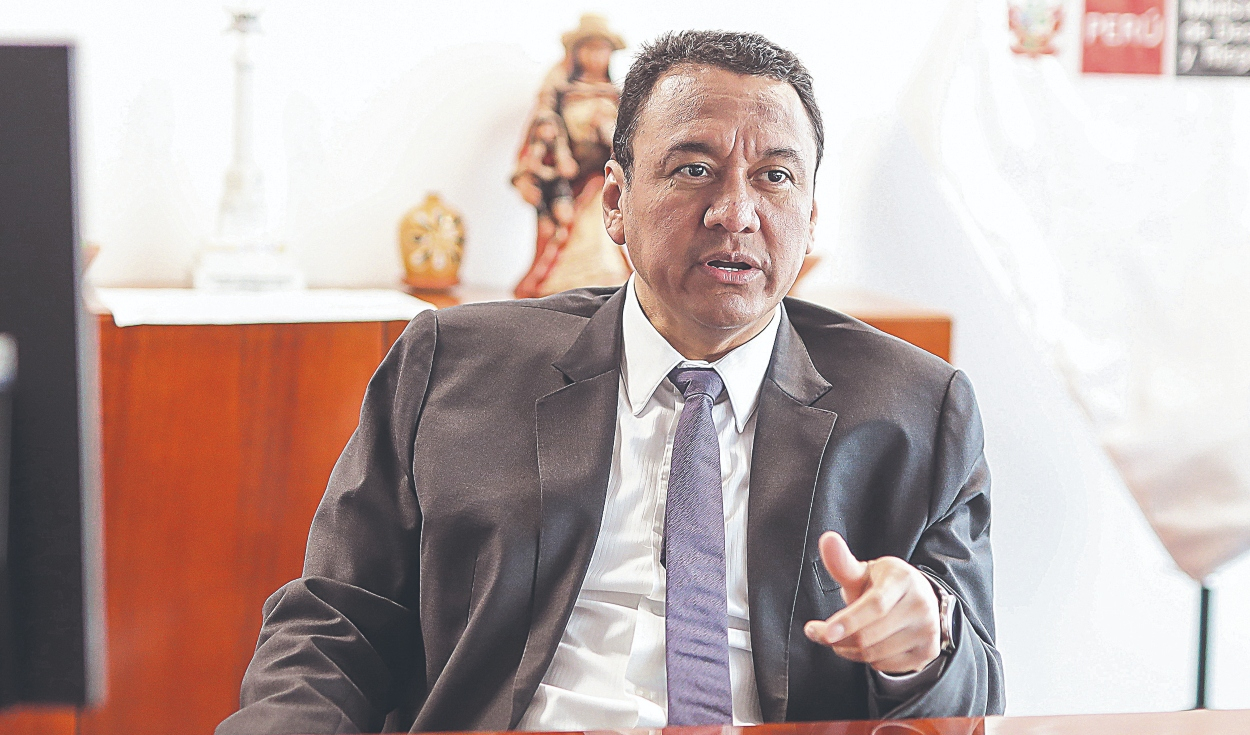
Ángel Manero, head of Midagri, anticipates that climate change will complicate the income of small farmers this year. However, he is confident that a new Agrarian Law and the use of GMOs in Peru will alleviate the agro.
—At the end of the first quarter, how did the year start for agriculture in Peru?
—In addition to the rain of summer 2023, Last year we had the problem of temperature differential. Two, three degrees above normal. That complicated the fruit trees: lemon, mango, blueberries, pomegranates, grapes. The supply went down, but this year there will be a significant rebound. Additionally, water stress was expected, so much so that a lot of potatoes were planted. But there wasn’t, and that’s why it’s abundant this month and there will continue to be plenty next month. That’s why the price is low, at S/0.40 or S/0.45 in ranch. There will be a lot lemon, For example. And that, on paper, increases your GDP, but, in practice, it lowers prices. Lemon and mango will be very cheap this year. The avocado is already at S/1 in the farm, when it is normally between S/2.50 and S/3.
—Are there measures to compensate for these losses?
—There is certainly a drama. Look, the sweet potato in February was between S/0.10 and S/0.15, when it should be at S/0.60. The potato is at S/0.40 or S/0.45, when it should be S/0.60 or S/0.70. The carrot is at S/0.10 in the farm, when it should be at S/0.50 or S/0.60. It’s a lot of money, it’s impossible to compensate [por Midagri] and the producers assume it with great annoyance. Unfortunately, this year these losses are going to be significant for small producers and we say this with total transparency.
-What to do then?
—This happens, among other things, because we do not have an efficient information system that helps prevent excess planting. That is something we are working hard on. This year already we must launch our traffic light information system to warn about over-planting.
—And in contrast, how did agricultural exports start the year?
-Fairly good. There was a small rebound compared to 2024, when 100,000 formal jobs were lost and something similar is happening this year. And also investments: in 2023 there were no significant ones and this year there are none either. Therefore, we work on a new Agrarian Lawto see how to encourage new investments that support future growth.
—Will they honor the Beta bonus?
—In the proposal for the new Agrarian Law nothing is being invented, it is returning to the incentive they had before Law 31110, the one they had and they took it away. Regarding labor flexibility, we are not moving anything. We are leaving worker benefits as they are. The famous 30% Beta bonus will remain, as well as other labor issues.
—The idea is also to extend the agricultural frontier. When will Chavimochic be ready?
—The contract has already been signed with the Canadian Government, which will involve the construction of the Palo Redondo dam, the third line of the Virú Siphon and the automation of the entire system. These works will end at the end of 2027. In parallel, the regional government of La Libertad has to work on the Canal Madre. The regional government has made a timeline and they estimate that the Mother Canal will only be in place in 2029. So, probably, by the end of 2029 we will have the entire system built and operating.
—The request for powers contains a chapter for transgenics. What is it about?
—We have a moratorium on production, but imports are not prohibited. We import corn and soybeans for chickens, pigs, cattle, and some wheat as well. A strange situation: our industry can use wheat, our animals can feed, but our farmer cannot sow. And what happens ? That the corn surface is increasingly decreasing and imports are increasing. We make our cotton practically disappear; We cannot compete with transgenic cotton from other countries.
—And that’s where LMOs come in.
—We want to allow products that are not for direct human consumption to be grown, such as corn for animals and even soybeans (although it is difficult to plant in Peru), cotton to reactivate the clothing industry, or forestry crops. It’s just a caveat.
—Have you discussed the project with local producers?
—In the case of the two most sensitive products (corn and cotton), we have discussed it. And that is precisely where there are the most opportunities, right?
—A measure very aimed at recovering the GDP of agriculture.
-Completely. In corn alone we have the potential to develop 200,000 hectares and replace what was imported. We are talking about 15 tons and almost US$5,000 per hectare. Corn alone is close to US$1,000 million. In cottonthe potential is 100,000 hectares and another US$1,000 million.
—Although there doesn’t seem to be so much clarity with the little one.
—Be careful that LMOs are for small producers. Traditionally, they are the ones who grow corn or cotton. The big ones are in other crops such as fruits and vegetables.
—But by allowing OVM, doesn’t the field also open up for them?
—Oh, without a doubt.
Source: Larepublica
Alia is a professional author and journalist, working at 247 news agency. She writes on various topics from economy news to general interest pieces, providing readers with relevant and informative content. With years of experience, she brings a unique perspective and in-depth analysis to her work.












